
Contact

Home
H. J. McCooey part 14
Yowie / Bigfoot



AUSTRALIAN SNAKES.
THE BLACK SNAKE (PSEUDECHIS PORPHYRIACUS).
The Queenslander (Brisbane, Qld.)
Date: May 27, 1899
Page Number: 980 S
By H.J. M'Cooey.
Too little is known about the snakes of Australia, and this little is known imperfectly. Australians, otherwise intelligent and well-informed, though too frequently professing to know everything on this subject, nevertheless, when arraigned at the bar of science, know less than nothing. The Australian bushman of to-day is no better informed with regard to our numerous and highly-interesting snakes than the bushman of sixty years ago. Ever ready to pose as an infallible authority on Australlan snakes, the bushman knows next to nothing about their life-history, or habits, and cares less.
...
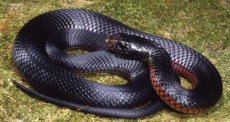

AUSTRALIAN SNAKES.—II.
THE TIGER SNAKE (HOPLOCEPHALUS CURTUS).
The Queenslander (Brisbane, Qld.)
Date: June 3, 1899
Page Number: 1027 S
By H.J. M'Cooey.
...
I have known this snake after fighting desperately with and several times biting a dog, after the dog had retired mortally wounded, to remain where it was, apparently as unconcerned as if nothing had disturbed it.
...
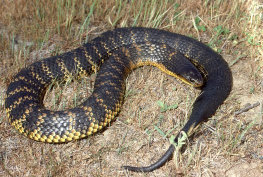

AUSTRALIAN SNAKES.---III.
THE BROWN SNAKE (DIEMENIA SUPERCILIOSA).
The Queenslander (Brisbane, Qld.)
Date: June 10, 1899
Page Number: 1056 S
By H.J. M'Cooey.
...
This snake is very frequently found with three full-sized poison fangs, occasionally with four. In most instances the fangs stand one behind the other, but three often occur, in a transverse line. This fact makes the generally accepted but erroneous theory that a venomous Australian snake leaves only two punctures when it bites absurdly and dangerously misleading. Both the Brown and the Black Snake may, and very frequently do, leave three or four severe and distinct fang punctures...
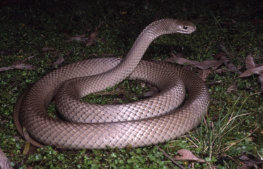

AUSTRALIAN SNAKES.---IV.
THE WHIP SNAKE (DIEMENIA RETICULATA).
The Queenslander (Brisbane, Qld.)
Date: June 17, 1899
Page Number: 1121 S
By H.J. M'Cooey.
...
This fact accentuates a former statement of mine that with snakes colour, in the determination of a genus of species, is absolutely worthless, and eminently misleading.
...
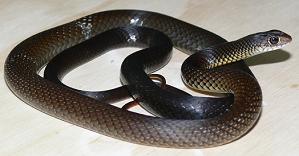

AUSTRALIAN SNAKES.—V.
THE DEATH ADDER (Acanthophis antarctica).
The Queenslander (Brisbane, Qld.)
Date: June 24, 1899
Page Number: 1166 S
By H.J. M'Cooey.
...
The last five or six scales on the tall of the Death Adder project about an eighth of an inch, sometimes two-eighths, beyond the tail proper, and firmly coalesce, forming a slightly downward curved spine. This is the much dreaded so-called "sting" of the blackfellow and the bushman. Hundreds have asserted in the Press during these last eighteen years that they have actually seen dogs, horses, and cattle which were merely struck with this spine instantly drop dead!
...
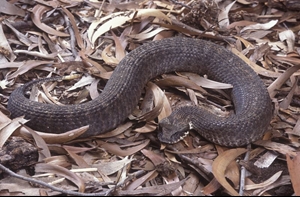
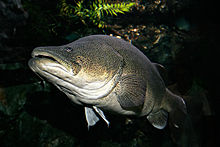

The Brisbane Courier (Qld.)
Date: December 11, 1899
Page Number: 4


Reminiscences of the Barcoo.
Worker (Brisbane, Qld.)
Date: December 16, 1899
Page Number: 8
...
I have put in somewhat of a memorable night since then with M'Cooey when he made his scientific overhaul of the premier lizard ; but the god of dreams came to my aid just at a most critical point in natural science, aided by the use of a two foot rule and sounding for the fiftieth time like "decimal plus fifteen." But Mac was a nocturnal saint compared to my Barcoo friend of long ago. They were the good old days...

AUSTRALIAN SNAKES.—VI.
THE RINGED SNAKE (Vermicella annulata).
The Queenslander (Brisbane, Qld.)
Date: December 23, 1899
Page Number: 1235
By H.J. M'Cooey.
...
I desire to emphasise the fact that Vermicella annulata is extremely venomous, and the fact of the being nocturnal in its habits renders it pre-eminently dangerous in localities where it abounds. More people and more animals have been bitten by this snake in the Western parts of New South Wales than by all the other venomous snakes combined.
...


AUSTRALIAN SNAKES.—VII.
THE VARIEGATED SNAKE (HOPLOCEPHALUS VARIEGATA).
The Queenslander (Brisbane, Qld.)
Date: December 30, 1899
Page Number: 1283
By H.J. M'Cooey.
This reptile is interesting on account of its apparent similarity to one of our harmless and common snakes—namely, the diamond snake (Morelia spilotes, Gunther); and, as it actually occurs side by side with the last named reptile, and is highly venomous, a brief description of it ought not to prove uninteresting.
...

AUSTRALIAN SNAKES. —VIII.
THE ORANGE-BELLIED SNAKE, PSEUDECHIS AUSTRALIS.
The Queenslander (Brisbane, Qld.)
Date: January 6, 1900
Page Number: 16
By H.J. M'Cooey.
...
l am deeply penetrated with the belief that this snake is extremely rare, and its distribution exceedingly limited, for two rather forceful reasons—firstly, because I myself have met with but two examples of it ; and, secondly, because no examples of it, excepting the one donated by me to the Australian Museum, Sydney, have been received by that institution during these last ten years.
...
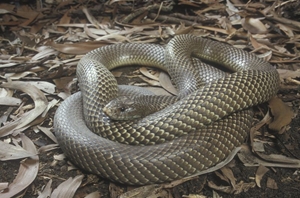

AUSTRALIAN SNAKES.---IX.
THE BROWN TREE SNAKE (DENDROPHIS FUSCUS).
The Queenslander (Brisbane, Qld.)
Date: January 13, 1900
Page Number: 60
By H.J. M'Cooey.
...
The reptile under consideration is wholly devoid of poison glands and poison fangs, is consequently perfectly harmless, and, unlike many well-known non-venomous snakes, never attempts to bite even when taken in the hands and roughly used. Nevertheless, this harmless snake is regarded with customary horror by bushmen, killed whenever discovered, and spoken of invariably as a venomous "whip snake."
...
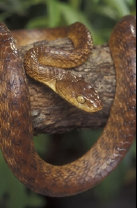

AUSTRALIAN SNAKES.—X.
HOPOLOCEPHALUS SIGNATUS, GUNTHER, AND HOPLOCEPHALUS NIGRESCENS, KREFFT.
The Queenslander (Brisbane, Qld.)
Date: January 20, 1900
Page Number: 108
By H.J. M'Cooey.
The abovenamed snakes are extremely common in New South Wales and in Queensland. But in every single instance—in hundreds of instances—I have always heard them referred to by bushmen as "young black snakes." No greater fallacy than this could exist.
...

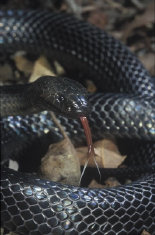

AUSTRALIAN SNAKES.—XI.
THE ROCK SNAKE, LIASIS CHILDRENI.
The Queenslander (Brisbane, Qld.)
Date: February 3, 1900
Page Number: 204
By H.J. M'Cooey.
...
It often attains a length of 22ft., and has been known, in some few instances, to reach the extraordinary length of 24ft. 3in. It may attain even a greater length ; but this is very far from being probable.
...


AUSTRALIAN SNAKES.—XII.
The Queenslander (Brisbane, Qld.)
Date: February 10, 1900
Page Number: 268 S
By H.J. M'Cooey.
...
Before passing from our highly interesting and highly venomous snakes to our numerous and little less interesting non-venomous snakes I propose to make my attitude clear with reference to my numerous and ever-watchful critics. I have devoted a lifetime of study to Australian snakes and lizards, and have in captivity and in their native state studied their habits, scale construction, poison apparati, their breeding habits, and their anatomy; and this, too, under the ablest authorities that ever set foot on Australian soil—such eminent men, for example, as the late Gerard Krefft; J. Douglas Ogilby, F.L.S., Eng.; C. W. De Vis, M.A., Brisbane Museum ; and last, but perhaps not least, Mr. R. E. Waite, Australian Museum, Sydney. Hence it follows that I ought to know something at least about Australian snakes and lizards.
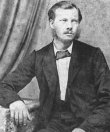
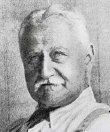


Krefft Ogilby De Vis Waite

Freeman's Journal (Sydney, NSW)
Date: March 10, 1900
Page Number: 24
Quite a number of snake stories are "peculiar"—to put the matter mildly—but here is one which must be accepted as genuine, for it comes from one of the most patient and persevering students of snake life we have in New South Wales—Mr. H. J. M'Cooey, to wit. Mr. M'Cooey says—Re snakes, here is something that occurred within my own knowledge to one of our largest genera (Liasis childreni) on the Darling Downs, in the spring of 1898. A 19ft, 6in. specimen, evidently ravenously hungry, found a newly-dropped dead lamb and swallowed it. Proceeding onwards he saw another newly-born Iamb just inside a seven-wire fence, and putting as much of himself through the fence as the bulge in him caused by the first lamb would allow, he swallowed the second lamb also. After that he found himself in a difficulty, his head and one lamb being on Yalboombah run, and his tail and other lamb at Callangatta, and neither lamb would go through. So he settled down to wait on both these pastoral properties till one or both animals digested. He was found, still digesting, by "Crooked Mick," boundary-rider on Callangatta and handed over to me. Though the lambs could not have been swallowed longer that 24 hours, yet they were in an advanced state and swarming with intestinal snake-worms. The digestive gastric juices of snakes are marvellously active in their action—much more so, I imagine, than in the carnivora, or even in the pig.
After eating, the snake becomes dormant while its digestive system works. If a snake is threatened right after a meal, it may regurgitate
the meal in order to escape from a perceived danger. If undisturbed, the snake’s digestive enzymes are able to completely digest and
absorb the nutrients in the prey. Then the digestive system starts to atrophy as the snake becomes active again. SOURCE



































